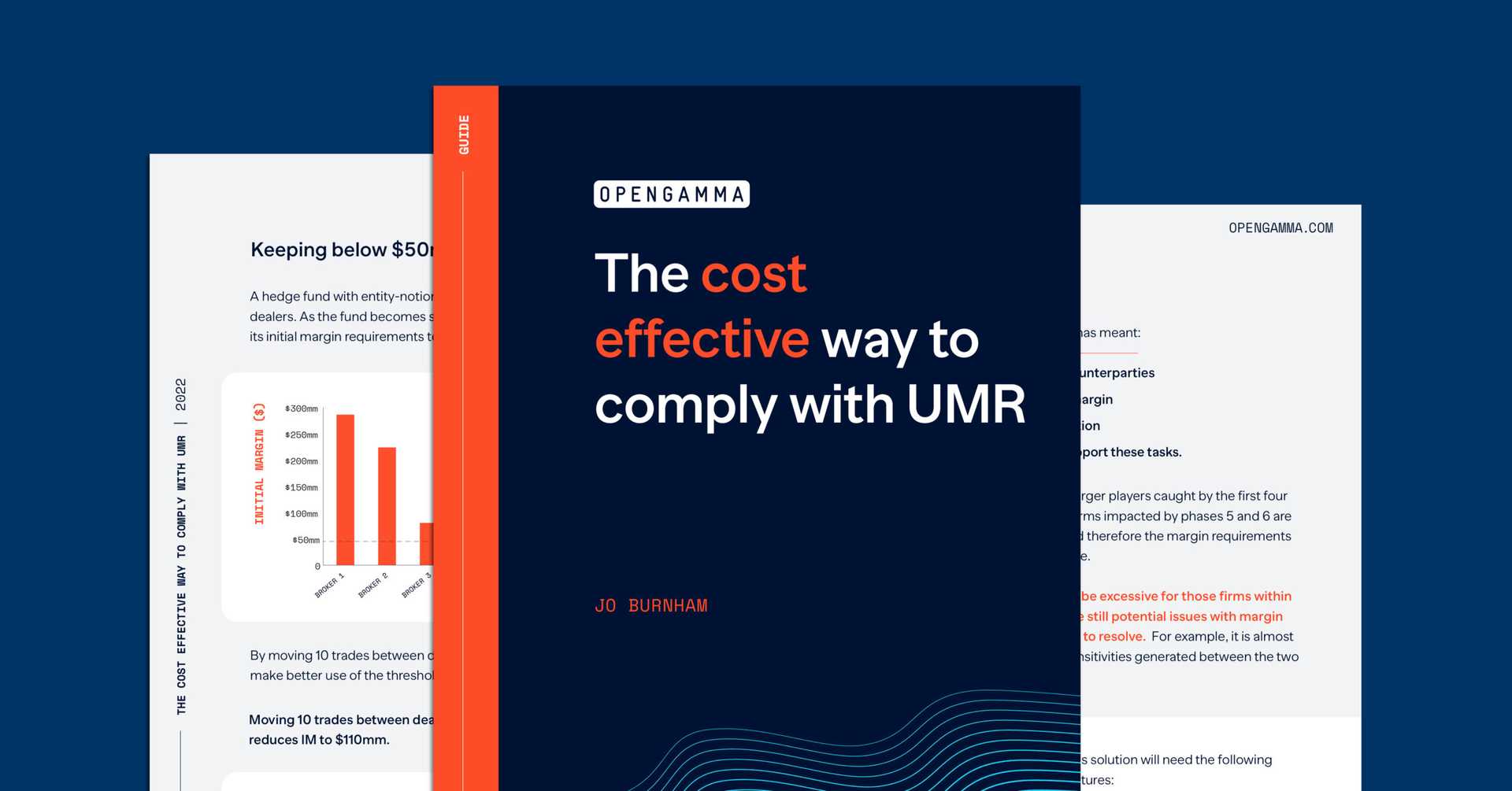It is now less than six months until the introduction of Uncleared Margin Rules (UMR) Phase 4, which come into play on the 1st September. A year after that the final Phase 5 will be introduced too. Most impacted parties are already familiar with Variation Margin, but Initial Margin is a new concept for a lot of entities. Add to this the potential changes to custody agreements to cater for new collateral types, and firms have a lot of change that needs to be managed in a very short space of time.
The next phases will see a lot of people trying to gain access to the same resources all at once. There were less than 50 market participants impacted by Phases 1 to 3, so with the introduction of Phases 4 and 5, dealers could face over 1,000 newly in-scope counterparties (NISCs) and over 9,000 new relationships.
So what questions do you need to be asking yourself now?
Do You Understand The Calculations Required?
It’s not easy to work out exactly what you need to calculate, and what trades you need to include in the calculation. This isn’t helped by the fact that jurisdiction differences make the exercise of determining in-scope products even more difficult.
There are also still questions around the Average Aggregate Notional Amount (AANA) calculations, which could make all the difference in whether or not you are caught by the rules. For example, should you just use notional for equity options or should it be delta-adjusted? Unfortunately, at the moment, there isn’t really any clear guidance. Plus the AANA needs to be calculated across all segregated mandates, which can make it difficult to gather the required data.
And, of course, there is the Initial Margin calculation. You will need to be able to generate sensitivities, provide them in CRIF format and then calculate SIMM. For this, unless you have a lot of spare time and resources with the required skills, you will need to select a vendor.
You might also want to consider clearing as an alternative. For this you will want to compare the costs, so not only will you need the SIMM calculation, you will also require a solution that can replicate the CCP margin methodologies.
Have You Considered The Impact On CSAs and Collateral?
For Variation Margin, most users will use cash. However, when Initial Margin is brought into the picture it is likely that more non-cash collateral will be used. This is made all the more likely by new regulation in the picture. For example, in US regulation, using cash to cover Initial Margin is regarded as taking credit exposure to the custodian. Because of this, the custodian has to re-invest the cash and the buy-side gets the haircut of the end investments. So, it’s much better to cut out the middle-man by, for example, buying the bonds yourself and use them as collateral.
The use of these new assets is going to make CSAs more complex, and you shouldn’t underestimate the time this repapering process will take. Plus, for segregated accounts, the clients choose the custodians, not the managers, adding a layer of complexity both on set up and in operations.
How Are You Going To Meet The Required SLAs?
Don’t forget that all of this operational process needs to be completed within a day. This means: generating sensitivities/CRIF, calculating SIMM, sending to counterparting for reconciliation, resolving disputes and actioning calls for collateral!
You’re not going to be able to do this unless you have the correct procedures and systems in place. It will not be enough to rely on a spreadsheet style solution for calculating and reconciling margin. And the problems don’t stop there. In previous phases custodians were having problems hitting the SLAs, and this is going to be even more of a problem with the huge increase in participants. Email will no longer be sufficient for collateral instructions.
What Outside Of UMR Is Going To Have An Impact?
There is a lot of market and regulation change happening at the moment, and this could potentially have an impact on your preparation for UMR as it’s making everything more complex.
To ensure adherence to the Best Ex regulation, you may need to set up even more relationships to obtain the best price, in addition to those relationships required for UMR.
Determining trades that are in scope of UMR could be impacted by the move away from LIBOR. Generally only new trades will be in scope, but what happens if you change the index on a swap from LIBOR to SOFR? Unfortunately the answer depends on where you are. Changing the index would make the trade in scope in Europe, but not in the US.
What Are The Important Dates You Should Be Aware Of?
The obvious answer here would be 1 September 2019 for Phase 4 and 1 September 2020 for Phase 5. But these are just the dates for which you need to be ready. What are the other dates that you should be aware of?
You need to know the dates to be considering your trades for the AANA calculations. For the US this is June, July and August 2019. For Europe it’s March, April and May next year for September 2020 UMR.
You will also need to set a date to get all of your legal documents with counterparties and custodians in place – and in plenty of time to get access to liquidity, as there will be lots of firms requesting these services at the same time. It is suggested that you should have this sorted by January 2020 otherwise you may be too late.
Even more pressing, you need a deadline by which to choose your custodians. Dates as early as July this year have been suggested, with some saying that Q4 enquiries won’t even get a look!




